Thursday, May 22, 2025
This morning, we enjoyed the pastries we’d picked up the night before, paired with fresh Keurig coffee in our suite. Before setting off on the day’s adventure, we couldn’t resist stepping out into the cool morning air and onto the shared upper terrace. From there, a spectacular view of the city unfolded below us—a vibrant patchwork of colorful buildings rising from the valley floor and climbing up the slopes of the surrounding mountains. In just a short time here, we had already learned to recognize two of Guanajuato’s most iconic landmarks in this buena vista: the grand, white neoclassical Edificio Central—the main administrative building of the University of Guanajuato—and the striking red and yellow twin-spired Basilica of Our Lady of Guanajuato.
—— Buena Vista Upper Terrace ——
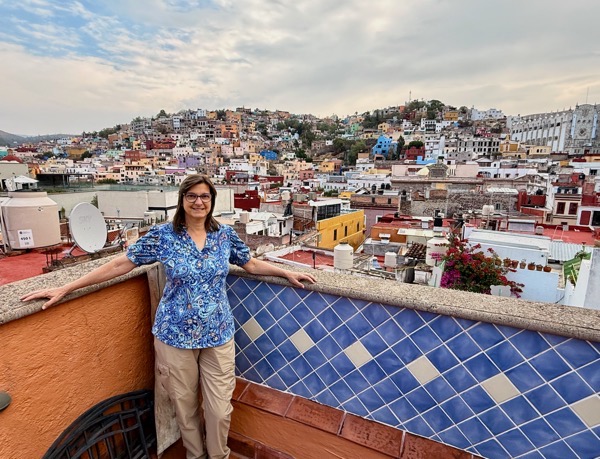
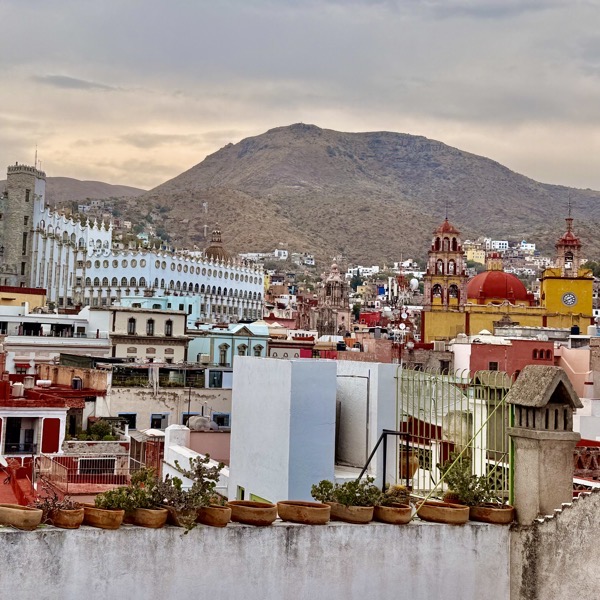

For today, Jeff had arranged an English-speaking tour of Cañada de la Virgen for us. After descending from our lodgings to the main road, we met our guide, Mauricio. The four of us then piled into his small car for the roughly 40-mile journey through the countryside.
After about an hour and a half on the road—winding through rural landscapes and scattered villages—we arrived at the site’s visitors’ center. While Mauricio secured our tickets, we took a few moments to explore the small but informative museum, which offered a glimpse into the site’s pre-Hispanic past.
Soon after, we boarded a modest shuttle bus with a small group of fellow visitors, accompanied by a local guide and driver. The bus rumbled along a narrow cobble-stone road for about ten minutes, passing through a secured gate that marked the entrance to the protected archaeological zone. As we rode, our Spanish-speaking guide—an employee of the state—welcomed us aboard and delivered a brief safety orientation. Eventually, we arrived at a simple wooden shed, which served as the drop-off point. From there, surrounded by the rugged beauty of the highland landscape, our journey into the past was set to begin.
—— Visitor Center, Museum and Site Gate ——
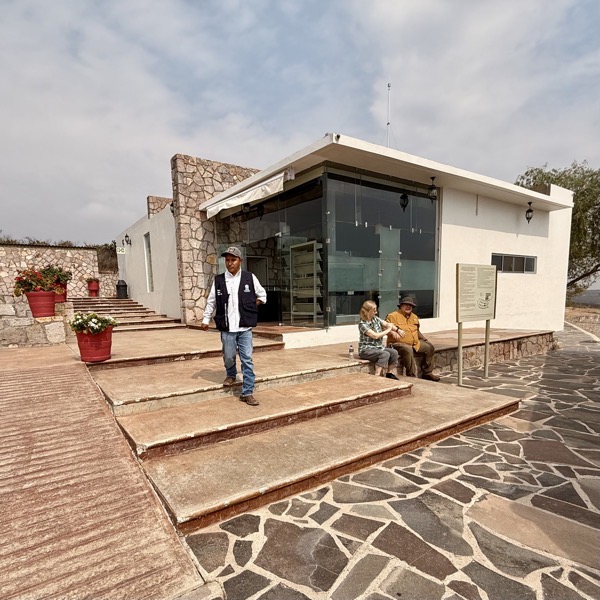
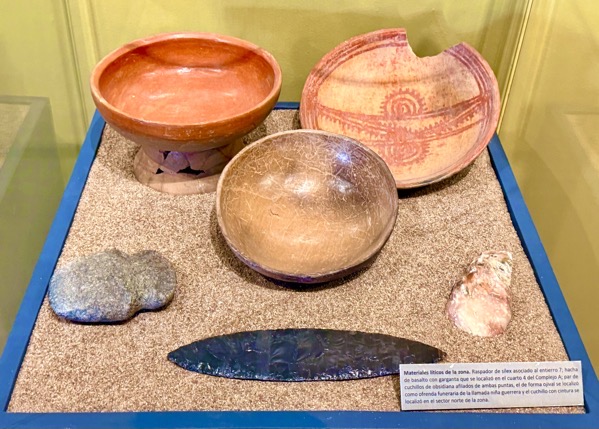
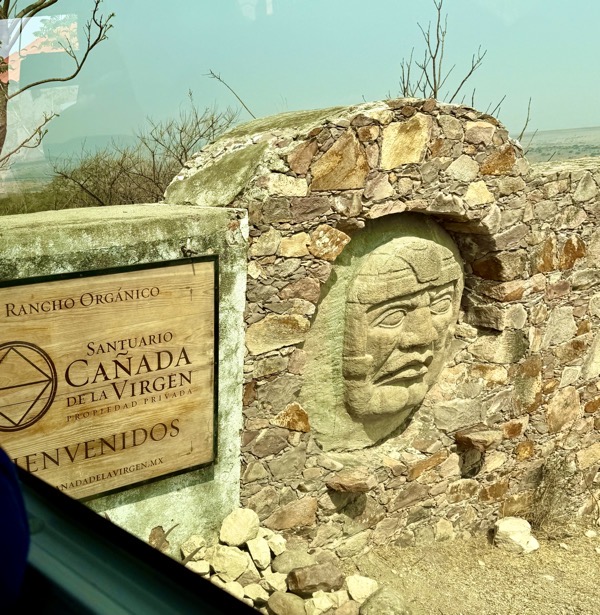
We began our winding, 45-minute uphill walk through a rugged landscape carved with ravines, making our way toward the archaeological site. The site’s current name, Cañada de la Virgen, which translates to “Virgin’s Ravine,” was bestowed by early Spanish settlers who linked the natural valley to the Virgin Mary. However, this name bears no relation to the remarkable pre-Hispanic archaeological complex built around 540 AD by the Otomi people, which is the true draw for visitors today.
As we walked, our local guide described the natural surroundings and history, though his narration was entirely in Spanish. I could catch only fragments, but Jane understood most of it, and between her translations and Mauricio’s occasional clarifications, I was able to follow along. Before leaving the dirt and cobblestone trail and beginning the original stone ascent to the site, we paused and sat on benches in a small shelter where our guide continued his explanation. Along the way, we spotted a few lizards sunning themselves on rocks and came across fresh animal tracks pressed into the dirt. At last, we passed through the gate of a simple chain-link fence—and there before us stood the main pyramid, emerging from the highland terrain in quiet majesty.
—— Approaching the Site ——
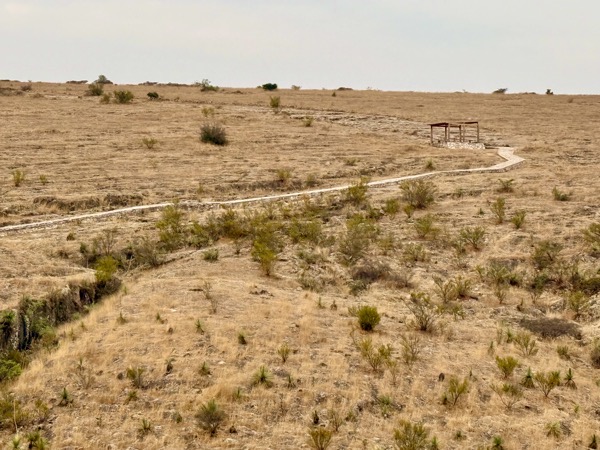
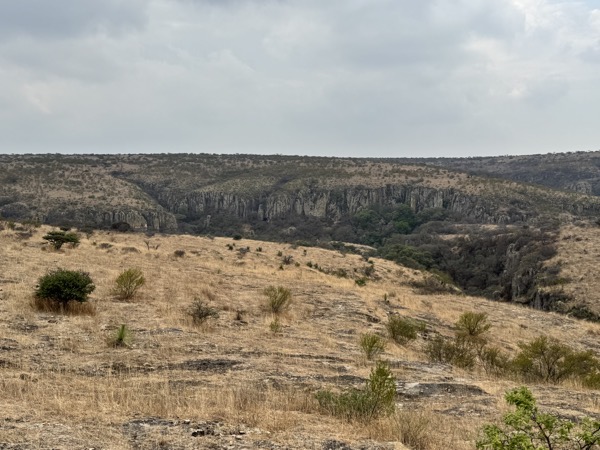
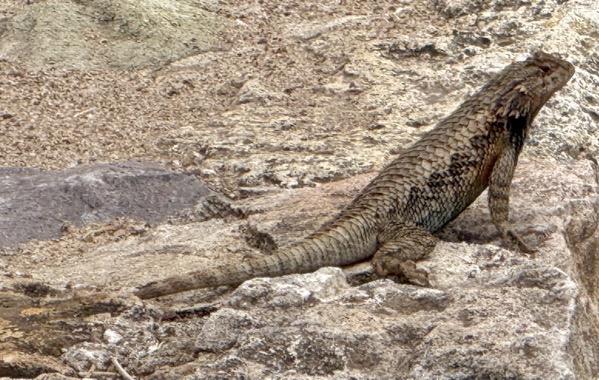
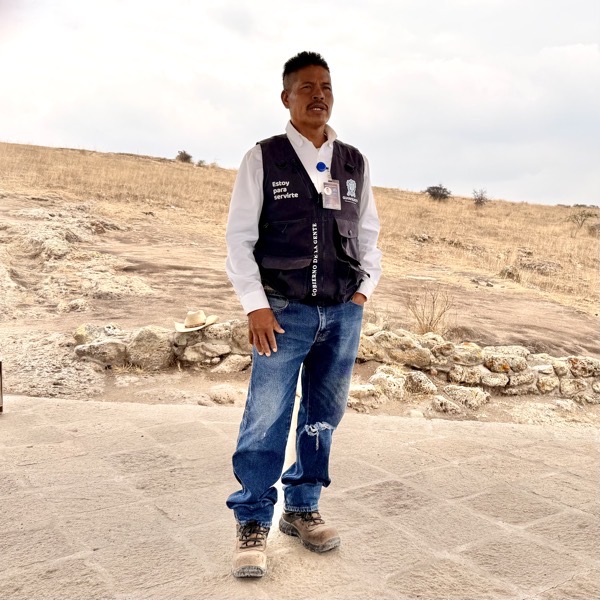
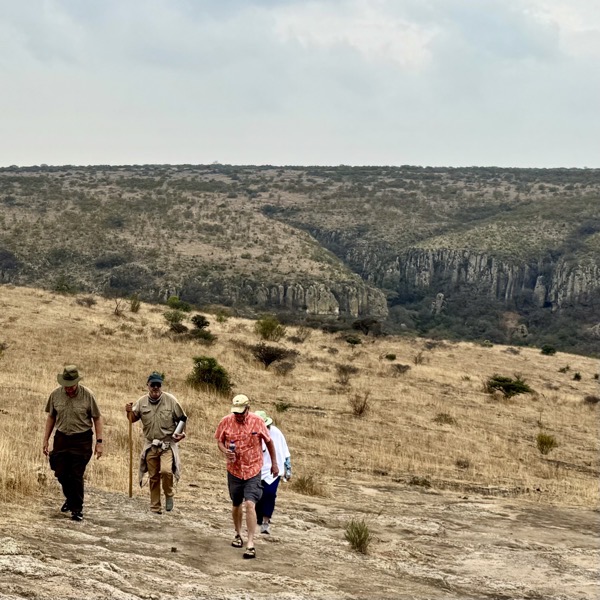
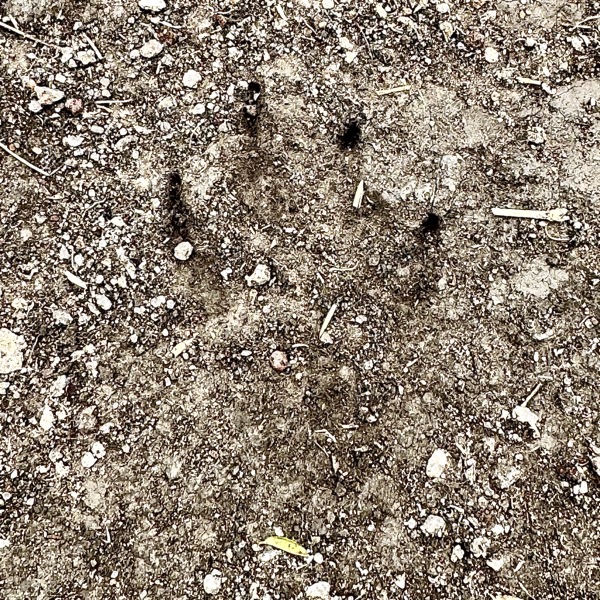
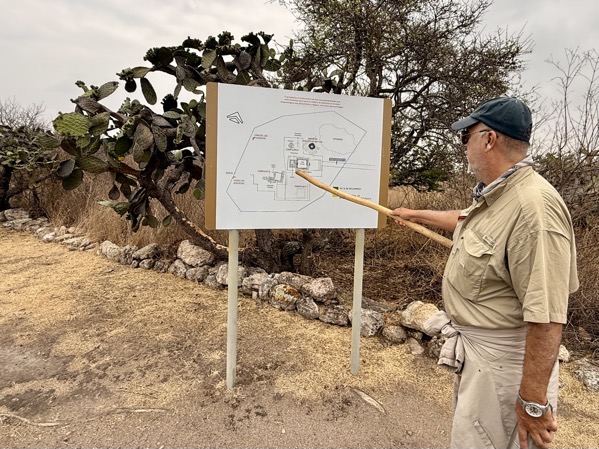
We were immediately struck by the commanding presence of the main pyramid—the House of the Thirteen Heavens. Its architecture reflects the Otomi people’s sophisticated grasp of cosmology and sacred numerology, with the name referencing the thirteen levels of the sky in Mesoamerican belief systems. We stood before its eastern face, precisely oriented to align with the rising sun during the solar equinoxes. The broad staircase once led to a temple at the summit, where elite priests likely performed rituals tied to the movements of the heavens.
Our guide led us to the right, beginning a counterclockwise walk around the pyramid. Soon, we reached an area filled with winding causeways, sunken patios, and ceremonial plazas—still scattered with ancient shards, grinding stones, and other remnants of daily and ritual life. From there, we passed the House of the Wind, a smaller structure believed to be dedicated to deities of air and movement. Perched along a breezy ridge, its placement maximizes exposure to the natural element it honors.
As we continued our walk around the western side, Mauricio kindly offered to take our picture with the massive structure at our backs. Next, we approached the House of the Longest Night, so named for its alignment with the winter solstice. This complex includes platforms and rooms that likely served both residential and ceremonial purposes for the elite class.
After completing the final stretch along the southern face, we found ourselves once again at the base of the front staircase. Eager to experience the site from above, we began our climb—ready to discover what the view from the summit would reveal.
—— Circling around the Main Pyramid ——
—— a.k.a House of the Thirteen Heavens ——
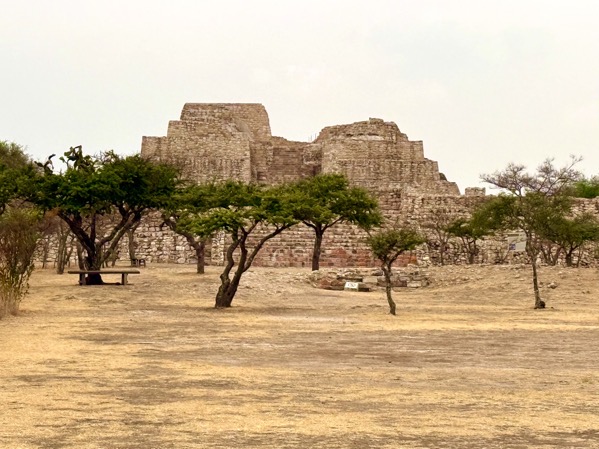
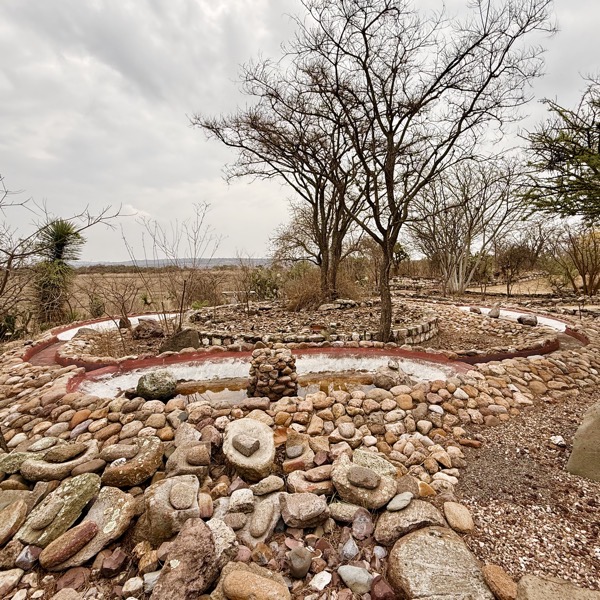
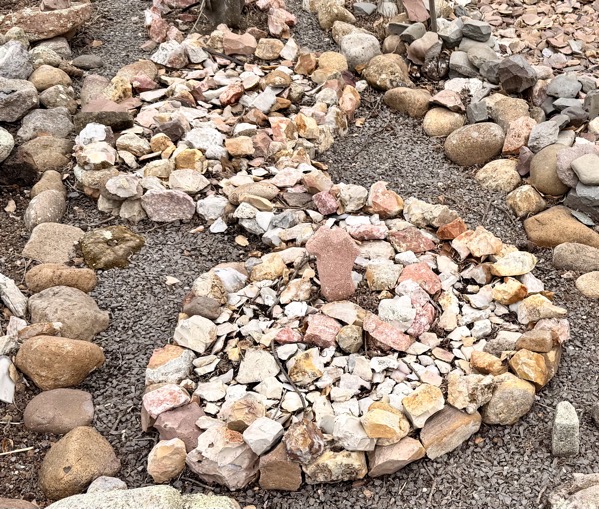
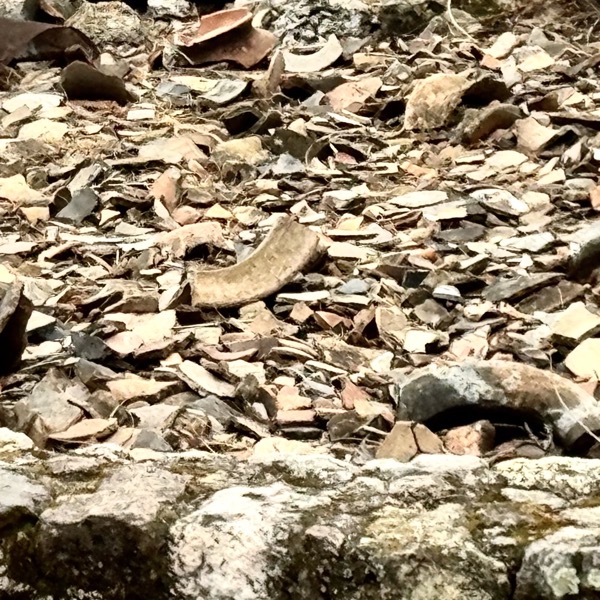
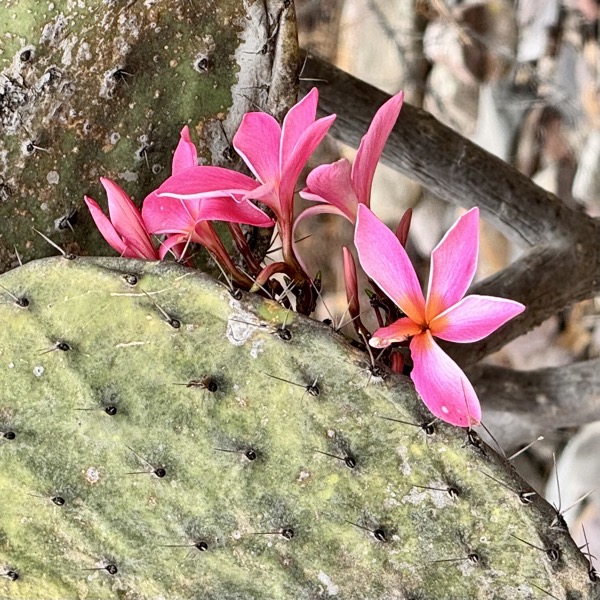
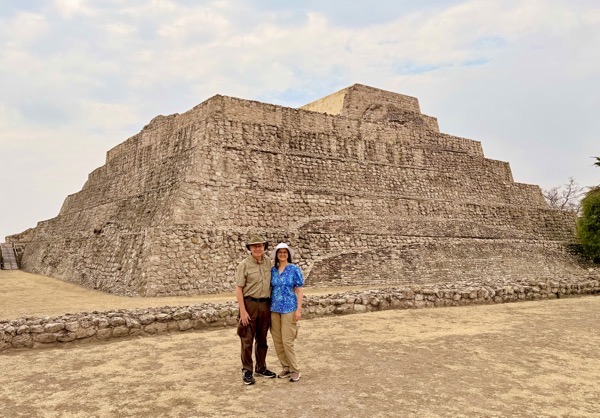
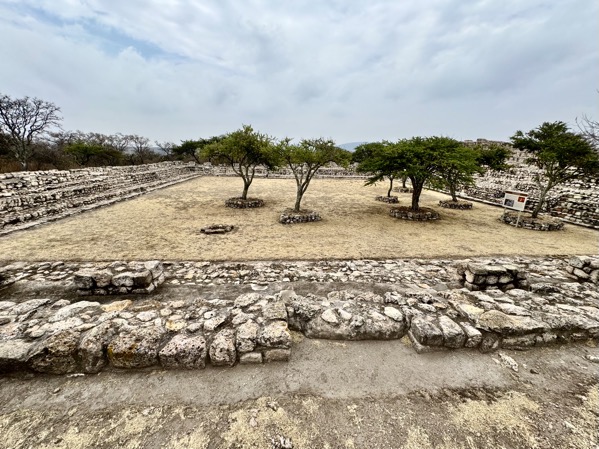

We began our ascent up the front staircase of the House of the Thirteen Heavens, the stone steps worn smooth by centuries of use. Because the steps were very narrow and steep, our guide advised us to climb in a diagonal, zig-zag pattern for better footing. Partway up, we paused at the sunken patio, a partially enclosed space built into the platform. Standing at its center, our guide demonstrated the remarkable acoustics with a sharp clap—its echo returned with surprising clarity, bouncing cleanly off the surrounding stone. It was easy to imagine an audience seated on the surrounding steps, listening as chants, drumbeats, and ritual speeches reverberated through the space—designed not only to carry sound upward to the heavens but also outward to those gathered below.
Continuing upward, we climbed the final steps to the summit, where the temple once stood. Though its structure is now gone, the view itself felt sacred. From the top, we could clearly see the House of the Wind and the House of the Longest Night below, their placements even more striking from above. All around us, the landscape unfolded in every direction—rolling hills, steep ravines, and the vast, golden sweep of the highland plain. From this lofty perch, time seemed to blur: ancient skywatchers, modern visitors, and the spirit of the land converged under the boundless sky.
—— Ascent up House of the Thirteen Heavens ——
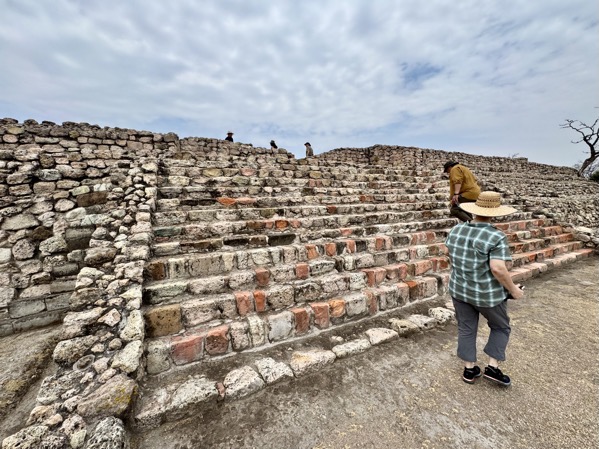
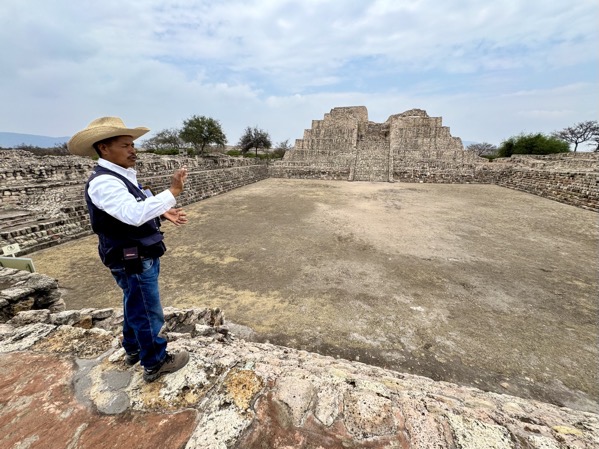
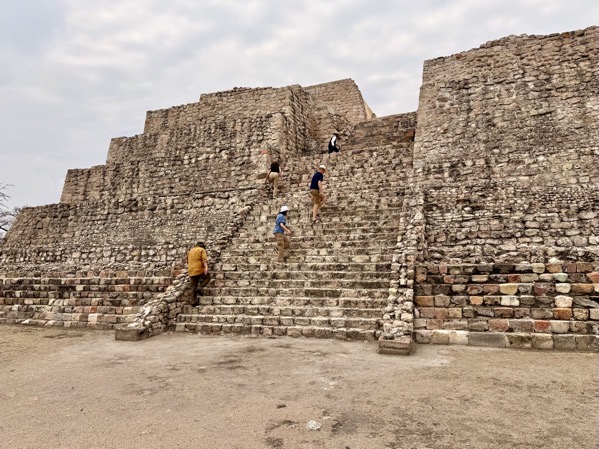
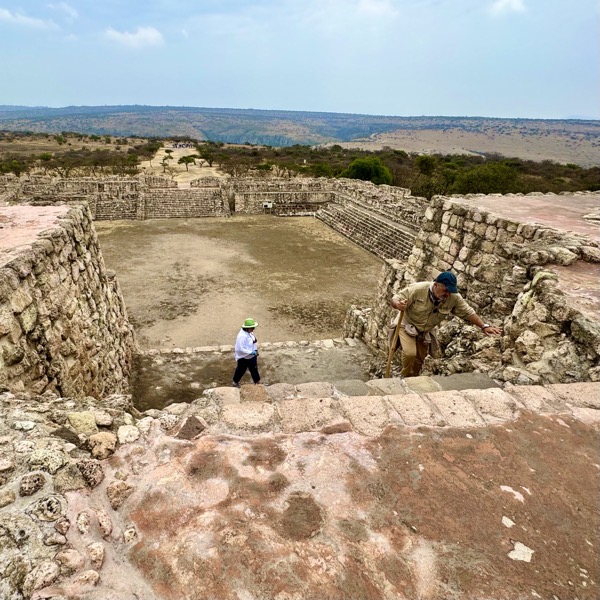
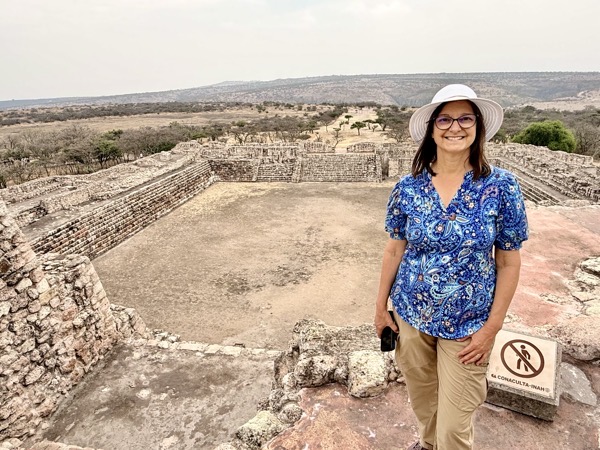
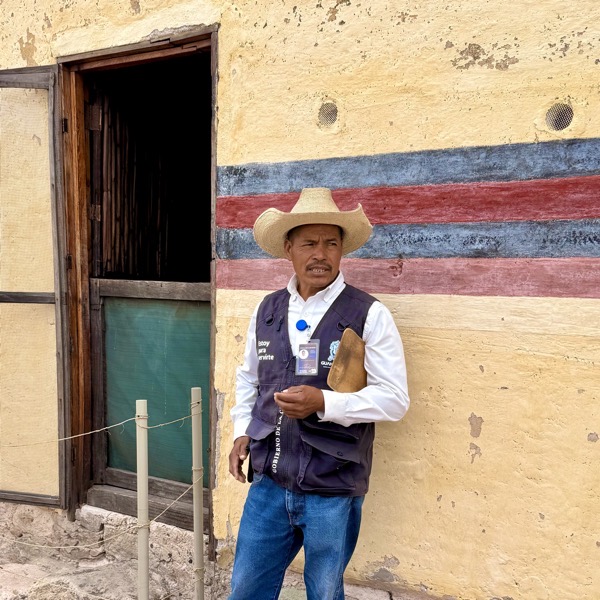
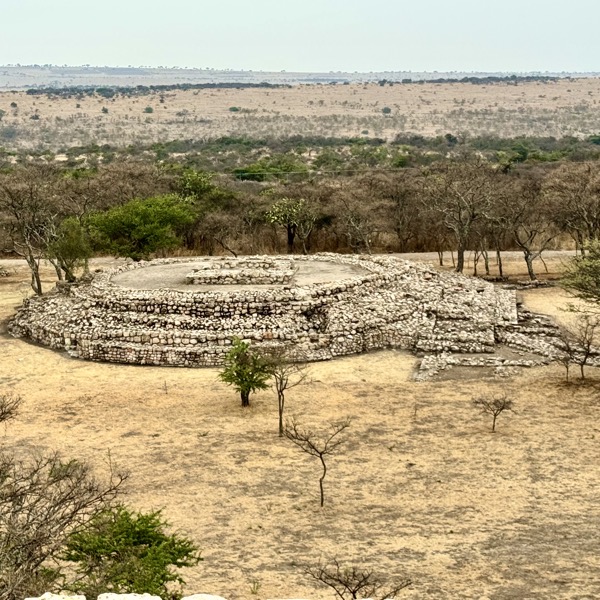

After carefully descending the pyramid’s narrow steps, we hiked back through the highland terrain to the bus pick-up point. We waited briefly before boarding the shuttle, which returned us to the visitors’ center. There, we watched a short ten-minute film about the site. Although the narration was in Spanish, the drone footage was captivating—it offered a fascinating aerial view of the very paths and structures we had just explored on foot. Soon after, we climbed back into Mauricio’s car for the drive back to Guanajuato, our singular experience still fresh in our minds.
—— Returning to the Bus ——
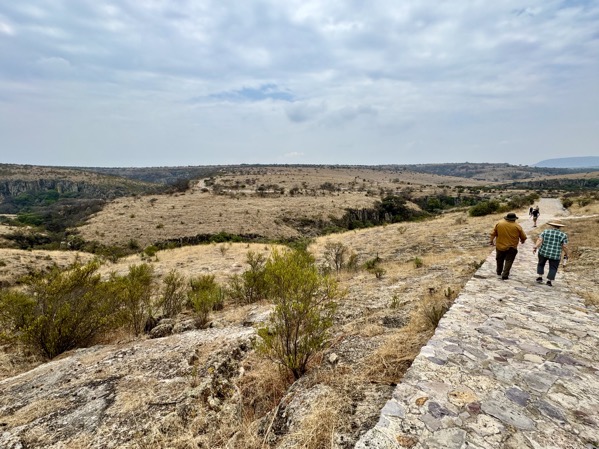
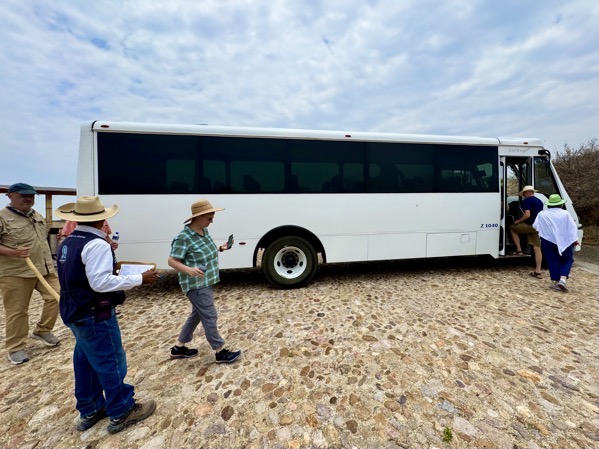
Mauricio had a lunch spot in mind, but on the way, we made a quick stop at a large Corona distributor, where he cheerfully encouraged us each to grab a beer “for the road.” Eventually, we arrived at our destination—The Office—but it wasn’t quite open yet, so we waited a few minutes in a nearby parking lot until the doors were opened.
When we finally stepped inside, we learned that The Office was a botanero—a type of Mexican restaurant where each drink ordered comes with a round of complimentary snacks, or botanas. The more you drink, the more food you’re served, turning a casual meal into a festive, communal experience. Staying late at The Office takes on a whole new meaning in this context.
Following Mauricio’s lead, we decided to eat and drink like Mexicans. We lingered over rounds of beer savoring the constant stream of flavorful small plates while peppering Mauricio with questions about the culture, the region, and his own story. By the time we’d eaten and drunk ourselves into a happy daze, we piled back into his car, full and content.
Since we were now in his neck of the woods, Mauricio proudly gave us a short driving tour of the area, even pulling up to show us his Puentesillas home—or at least the gated wall surrounding it—before finally escorting us back to the tiny plaza near our AirB&B where he had picked us up eight hours earlier.
—— The Office ——
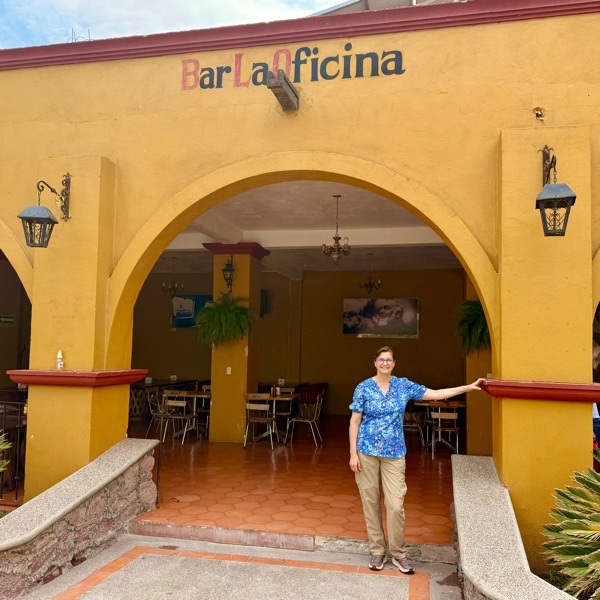
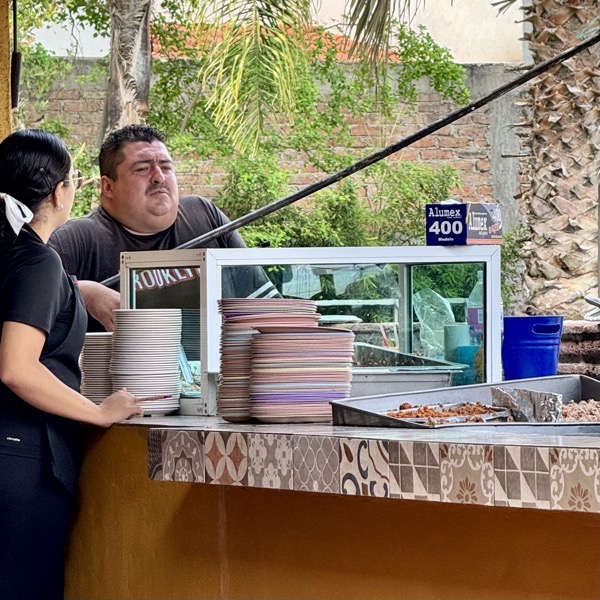
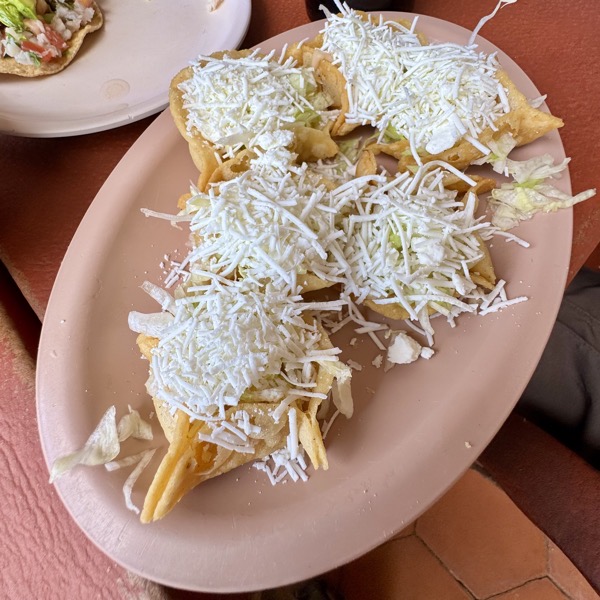
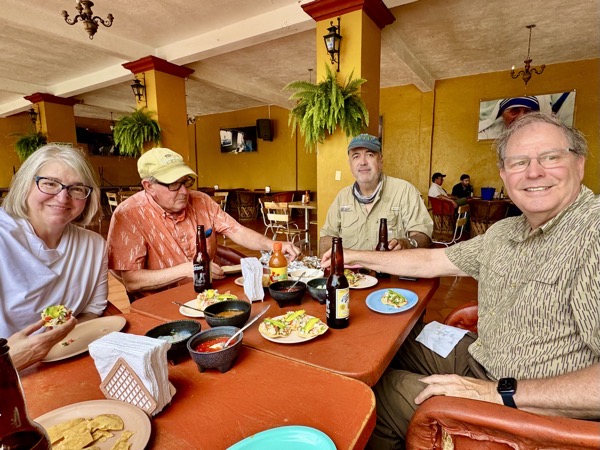
We were all so exhausted that we retreated to our respective rooms and promptly crashed for a couple of hours. No dinner was necessary, but around 7 p.m., the four of us wandered down the hill in search of ice cream—which, fortunately, was easy to find. The streets were full of life: locals strolled around, lounged on park benches, or dined in the many open-air restaurants that spilled into the plazas.
As night fell, the callejoneadas began—lively walking tours led by roving musicians called estudiantinas, dressed in Renaissance-style garb: breeches to the knees, tights to the waist, ruffled, and puffy-sleeved shirts embroidered with gold thread. These bohemian troubadours, instruments in hand, belted out romantic ballads and humorous folk songs as they led groups through the narrow alleys of the old city. The tradition began in 1963 at the University of Guanajuato, inspired by a 13th-century Iberian custom in which students performed in the streets for food or money. Today, it’s evolved into a beloved nightly spectacle that waltzes dozens of visitors through some of Guanajuato’s oldest corners. Humor plays a big part in the performance—audiences are encouraged to sing along, clap to the rhythm, and the most enthusiastic are coaxed into acting out scenes from local legends.
We spent a while wandering through the Jardín de la Unión, where mariachi bands played lively serenades for couples and families relaxing beneath the neatly trimmed laurel trees. As we strolled, we passed the illuminated Basilica of Our Lady of Guanajuato, its twin spires glowing warmly against the night sky, and the stately Teatro Juárez, where we’ll be attending a symphony performance tomorrow evening. Eventually, our footsteps carried us back through the charming streets to our accommodations, the echoes of music and laughter still lingering in the air.
—— Night Scenes in Guanajuato ——
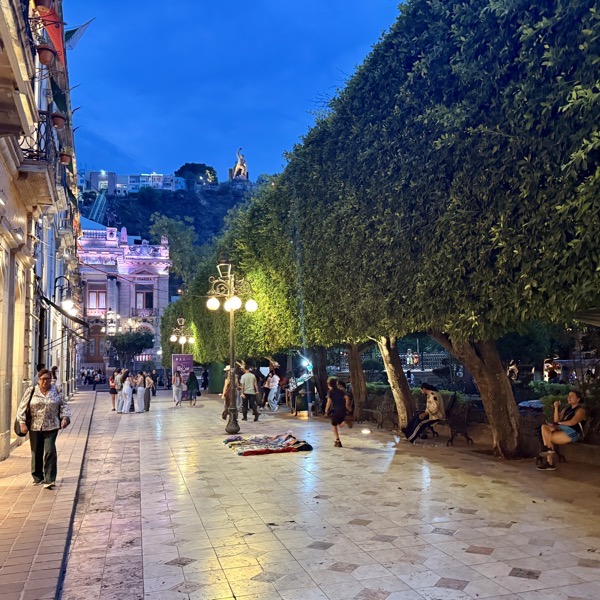
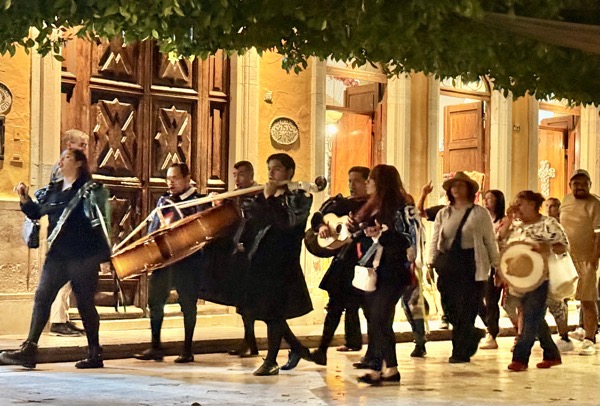

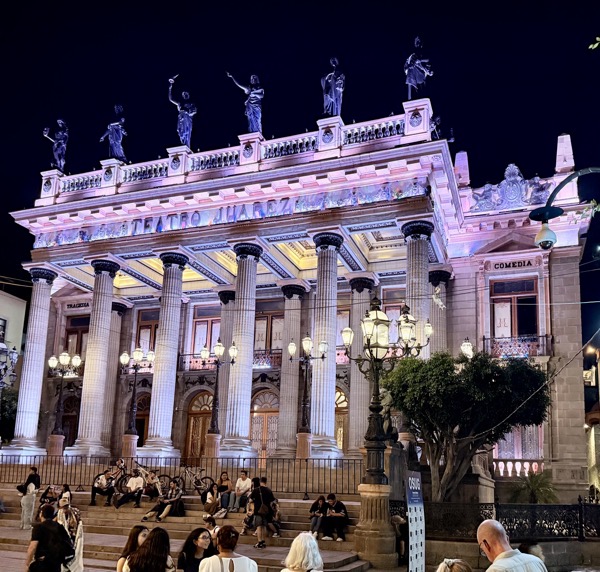

Back in our suite, we settled in for the night, windows open to the cool breeze, listening to the sounds of yet another callejoneada drifting up from a remote alleyway below our window. It had been a full day and a wonderful evening—one that truly immersed us in the rhythms and spirit of Guanajuato life.
—— Callejoneada below Our Window ——
